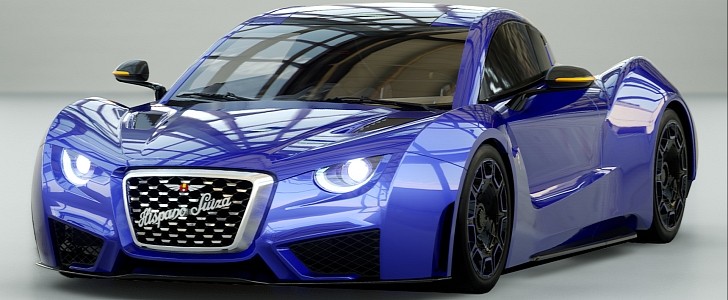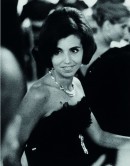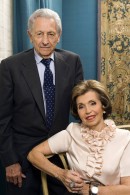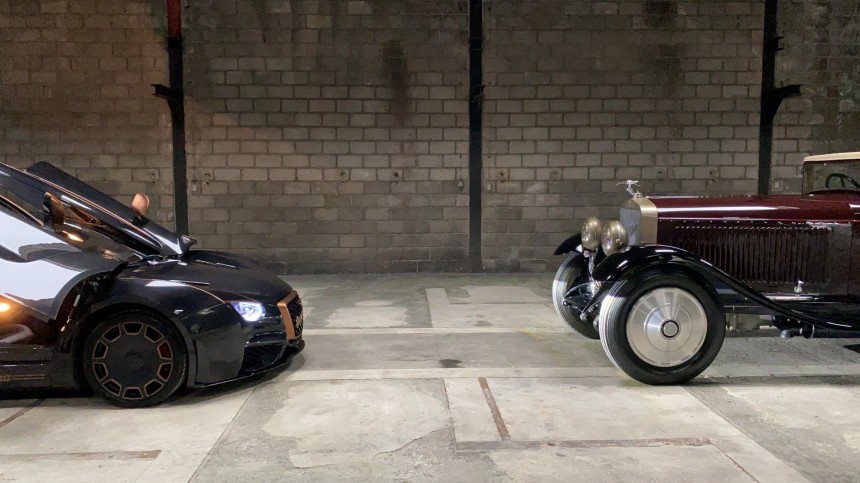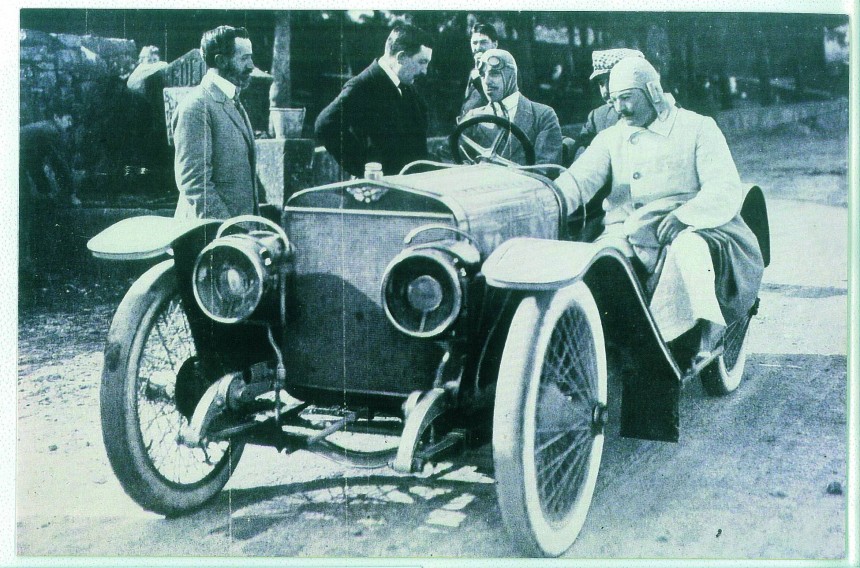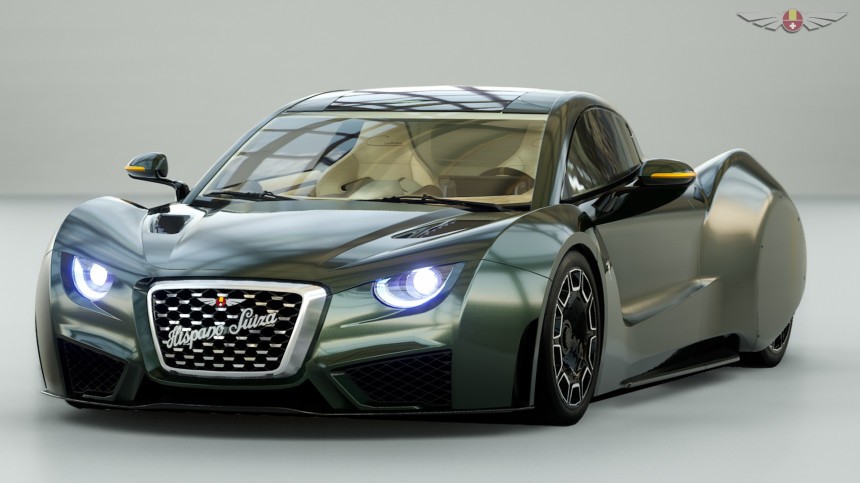Born more than a century ago, Hispano-Suiza was one of the most luxurious brands of its times and created more than just cars, it created works of art. Also, it made aircraft engines, trucks, and weapons. But now it tries to make an electrifying comeback with the Carmen luxury supercar.
The Hispano-Suiza brand had a troubled start in 1900 when a Spanish company named La Cuadra designed and built the first two internal combustion engines based on Swiss engineer Marc Birkigt's plans. Jose Maria Castro Fernandez bought the company two years later and renamed it Fabrica Hispano-Suiza de Automoviles, and some of its products may be found in various museums.
The glory years didn't last long, and the company went bankrupt in December 1903. They say the third time is a charm, and that's exactly what happened in 1904, when Damián Mateu, together with Francisco Seix and the Swiss engineer Marc Birkigt, created La Hispano-Suiza Fabrica de Automoviles under Castro's management. This time it worked.
The first vehicle produced by the new company, in 1905, was an armored truck powered by a 20 hp engine. It was followed by an inline-six, 75 hp car that established a record-run of 22 hours to cover the 850 km (528 miles) distance between Perpignan and Paris, France. That performance aroused big interest from the media, and made France the largest market for the Spanish brand.
In 1905 Hispano-Suiza made a car especially for King Alfonso XIII, who bought 8% of the company shares. The two-seat roadster was powered by a 60 hp inline-four engine and could reach up to 120 kph (75 mph), which was outstanding in 1905. Yet, again, everything took a different turn in 1914 when WWI broke.
Birkigt took a race-car engine and turned it into an aircraft powerplant. The aluminum V8 was a masterpiece of those times when cast iron was the main material used for these applications. Hispano-Suiza sold more than 50,000 of it in France, UK, the United States, Italy, Japan, and Russia. After the war, the company thrived and produced a V12 for racing boats. It also introduced its emblem, the stork, in 1919, as a homage to a French ace pilot, Georges Guynemer, who had that bird painted on its Hispano-Suiza-powered aircraft.
The brand became famous partly thanks to the Spanish King. But also King Gustavo V of Sweden, Louis II of Monaco, or Carol II of Romania became customers of the then famous brand. Later, the qualities of the cars it made didn't go unnoticed by other important figures of the 20th century, such as Pablo Picasso, Coco Chanel, Paul McCartney, or Albert Einstein, to name just a few.
During the Spanish Civil War in 1936, the company was nationalized and broke into three sections: aircraft and weapons, cars and trucks, and machine tools. The ill-fated company looked for new financial support to the Banco Urquijo and a group of Spanish companies, forming the Societad Iberica de Automoviles de Turismo (SIAT), founding the roots for the later SEAT carmaker, which today belongs to Volkswagen.
If the past was troubled, the rebirth of this company might be even more interesting. In 2019, Hispano Suiza unveiled the Carmen and the Carmen Boulogne supercars at the Geneva Motor Show. This time, without a combustion engine. It prepared for the future with electric powertrains but kept the ideas of its ancestors about exclusivity. With help from the former F1 driver Luis Pérez-Sala, a new platform took shape from the ground up and evolved into a one-of-a-kind vehicle. The former driver put his knowledge into the new product, helped tune the car's behavior and, also, finding customers.
While the company ownership and brand name are still a debatable problem, the vehicles are real. Together with the German Group Mohr, it created a new vehicle and unveiled it at the 2021 IAA in Munchen. To get more money for the brand's development, it even released 12 NFTs in partnership with Trillion Collection.
Many of the Carmen and Carmen Boulogne technologies are transferred directly from Formula E, which is the top-racing electric series. The car's bodywork is made out of carbon fiber, and the powertrain delivers 1,114 hp for a vehicle that weighs a mere 1,630 kg. That leads to a 0-62 mph (0-100 kph) run in 2.6 seconds, which should really get more attention from those looking for an exclusive, luxurious, and incredibly fast electric hypercar. Carmen is a tribute to the granddaughter of the company's founder, Damián Mateu, and the mother of the current president of Hispano Suiza, Miguel Suqué Mateu.
But this is not its only attribute. There are also other performance electric vehicles available on the road today, such as the mighty Rimac. But unlike them, Hispano-Suiza made the car available in no less than 1,904 combinations. Only time will tell if the Spanish-Swiss brand will see international recognition. But if there is something that I would love to see in 2022, it is this famous brand rebirth.
The glory years didn't last long, and the company went bankrupt in December 1903. They say the third time is a charm, and that's exactly what happened in 1904, when Damián Mateu, together with Francisco Seix and the Swiss engineer Marc Birkigt, created La Hispano-Suiza Fabrica de Automoviles under Castro's management. This time it worked.
The first vehicle produced by the new company, in 1905, was an armored truck powered by a 20 hp engine. It was followed by an inline-six, 75 hp car that established a record-run of 22 hours to cover the 850 km (528 miles) distance between Perpignan and Paris, France. That performance aroused big interest from the media, and made France the largest market for the Spanish brand.
In 1905 Hispano-Suiza made a car especially for King Alfonso XIII, who bought 8% of the company shares. The two-seat roadster was powered by a 60 hp inline-four engine and could reach up to 120 kph (75 mph), which was outstanding in 1905. Yet, again, everything took a different turn in 1914 when WWI broke.
Birkigt took a race-car engine and turned it into an aircraft powerplant. The aluminum V8 was a masterpiece of those times when cast iron was the main material used for these applications. Hispano-Suiza sold more than 50,000 of it in France, UK, the United States, Italy, Japan, and Russia. After the war, the company thrived and produced a V12 for racing boats. It also introduced its emblem, the stork, in 1919, as a homage to a French ace pilot, Georges Guynemer, who had that bird painted on its Hispano-Suiza-powered aircraft.
During the Spanish Civil War in 1936, the company was nationalized and broke into three sections: aircraft and weapons, cars and trucks, and machine tools. The ill-fated company looked for new financial support to the Banco Urquijo and a group of Spanish companies, forming the Societad Iberica de Automoviles de Turismo (SIAT), founding the roots for the later SEAT carmaker, which today belongs to Volkswagen.
If the past was troubled, the rebirth of this company might be even more interesting. In 2019, Hispano Suiza unveiled the Carmen and the Carmen Boulogne supercars at the Geneva Motor Show. This time, without a combustion engine. It prepared for the future with electric powertrains but kept the ideas of its ancestors about exclusivity. With help from the former F1 driver Luis Pérez-Sala, a new platform took shape from the ground up and evolved into a one-of-a-kind vehicle. The former driver put his knowledge into the new product, helped tune the car's behavior and, also, finding customers.
Many of the Carmen and Carmen Boulogne technologies are transferred directly from Formula E, which is the top-racing electric series. The car's bodywork is made out of carbon fiber, and the powertrain delivers 1,114 hp for a vehicle that weighs a mere 1,630 kg. That leads to a 0-62 mph (0-100 kph) run in 2.6 seconds, which should really get more attention from those looking for an exclusive, luxurious, and incredibly fast electric hypercar. Carmen is a tribute to the granddaughter of the company's founder, Damián Mateu, and the mother of the current president of Hispano Suiza, Miguel Suqué Mateu.
